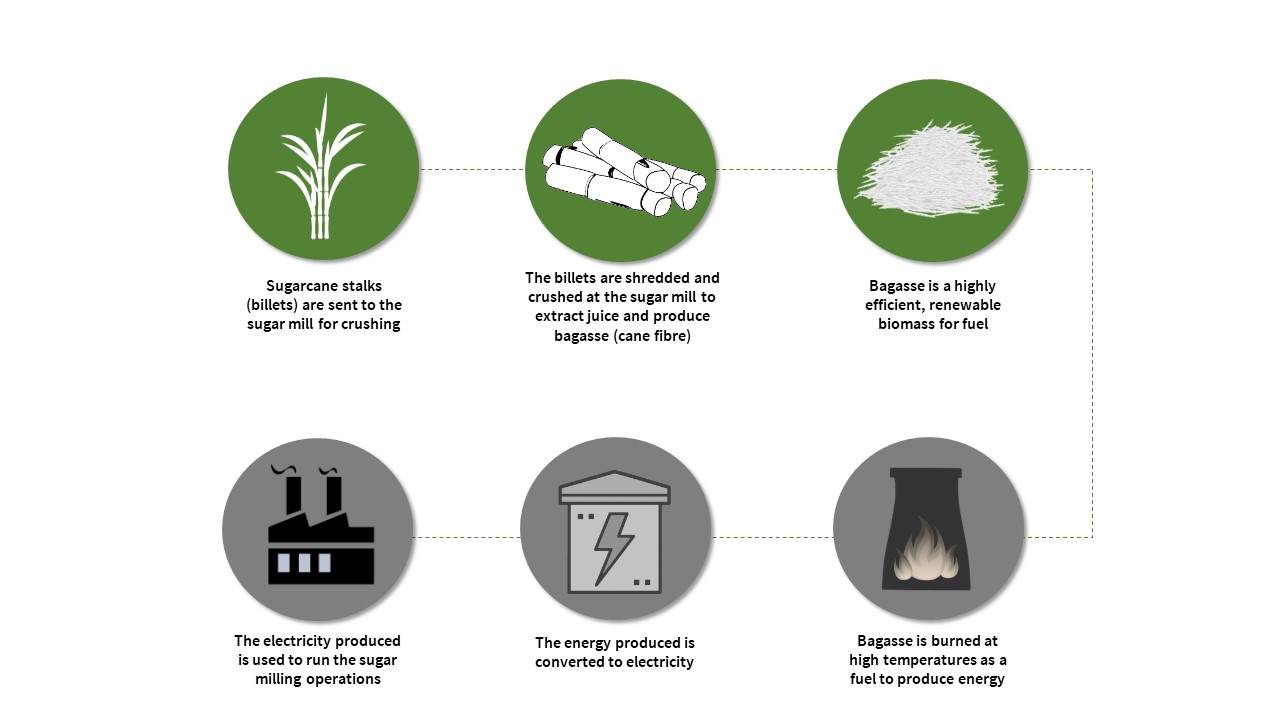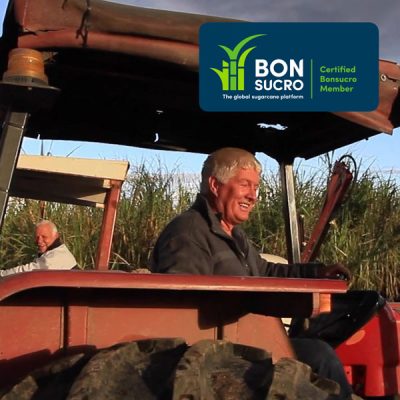The sugarcane industry has long been recycling crop residue to produce heat and electricity to power its factories. Known as bagasse, this by-product of sugar production is the fibrous material that remains after the cane is crushed to extract the juice.
Bagasse waste generated at sugar mills is used on-site to provide steam and electricity for the sugar making process. This is a major benefit enabling mills to offset almost all of the energy consumed.
Excess electricity can be exported into the grid and some sugar mills export up to half of the power they generate from bagasse back into the national energy market.
Using bagasse this way produces almost zero greenhouse gas emissions. Using it as an energy source avoids having to transport the waste off-site or leave it to rot and breakdown, resulting in methane emissions.
The use of bagasse nationally to produce ‘green’ energy is estimated to reduce Australia’s greenhouse gas emissions by over 1.5 million tonnes each year.
Source: cleanenergyregulator.gov.au





